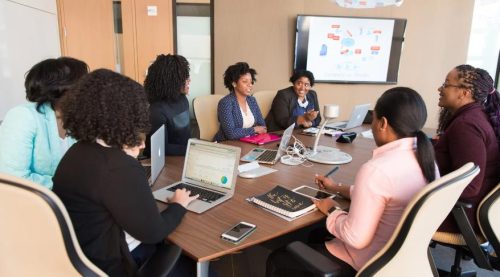After such a dramatic shift in working habits courtesy of COVID-19, it may seem counterproductive to return to the way things were back in the days prior to 2020. That said, different employees inevitably have different preferences and needs based on their day-to-day lives, meaning that a one-size-fits-all method of working is highly impractical.
This is why the flexibility of a hybrid working model allows for greater democracy for employees. As long as the work is completed, the destination in which it is done is now irrelevant.
One key question that should be asked is just how long these current workplace trends will continue. It is thought that things will continue to change in new and interesting ways, with several aspects of working life expected to continue evolving. The fact of the matter is that many offices are not modern or COVID-safe, and this is something that has to change if we are to move forward.
How do we move forward?
Flexibility is very much the keyword in the workplace these days, with many companies investing in a flexible workspace for their employees. After all, investing in employee satisfaction can pay dividends in terms of the satisfaction itself, and much more.
 Nowadays, people aren’t necessarily tied to the old 9-5 schedule. The early birds can rise and grind immediately, and the night owls are free to complete their work at their own desired time. Furthermore, work can be done internationally across time zones, which in some cases can open up prospective markets perhaps unthought of prior to the pandemic.
Nowadays, people aren’t necessarily tied to the old 9-5 schedule. The early birds can rise and grind immediately, and the night owls are free to complete their work at their own desired time. Furthermore, work can be done internationally across time zones, which in some cases can open up prospective markets perhaps unthought of prior to the pandemic.
When it comes to the commute too, many employees are likely to have saved a bundle on these costs, allowing a greater sense of financial security alongside that aforementioned flexibility. Given the cost-of-living crisis and the fact that rail prices are set to increase again in March, it makes sense to minimise these costs for your employees.
Return or revolution?
Of course, we always want to move forward in all aspects of life, nowhere more so than in our workplaces – after all, we spent the majority of our time there. Nowadays, we have the option of a virtual office, meaning we can have an office space without the extortionate overhead costs involved.
Given that we have moved past these geographical restrictions of days gone by, virtual offices take that into account too, allowing for you to set up shop anywhere you wish to do so. In many ways, you could argue that this is something of a return to previous working habits, without some of the business costs and negatives that this mode of working had once entailed.
 In essence, that is part of what we have gained from the pandemic – insights into the obsolete modes and methods of working that we perhaps hadn’t seen in the past. Nowadays, it isn’t about returning to life prior to the pandemic, but learning the lessons and moving forward to render those previous gripes a thing to be rightly left behind.
In essence, that is part of what we have gained from the pandemic – insights into the obsolete modes and methods of working that we perhaps hadn’t seen in the past. Nowadays, it isn’t about returning to life prior to the pandemic, but learning the lessons and moving forward to render those previous gripes a thing to be rightly left behind.
So as we bring in a new year, it’s not about returning to the way things were, but looking back and learning the appropriate lessons as to how we conduct our working lives.



